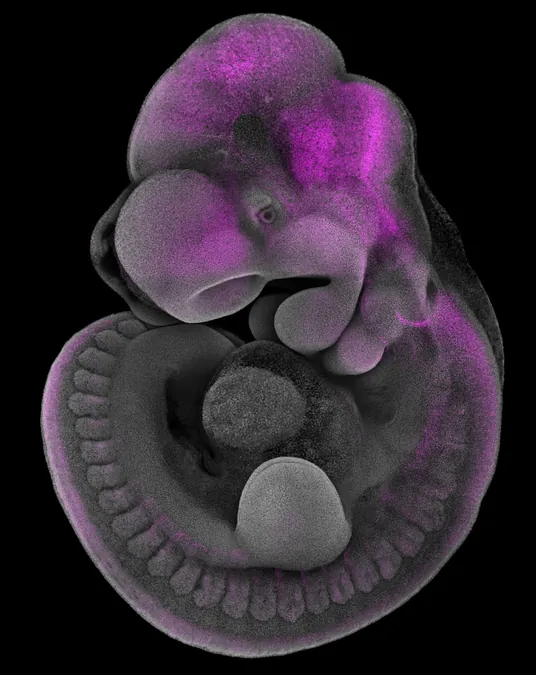
Unraveling the Mystery: New Findings Challenge Fundamental Quark Symmetry
2025-05-08
Author: Siti
Unexpected Discoveries in High-Energy Collisions
In a groundbreaking study, scientists from the international NA61/SHINE experiment have uncovered a striking anomaly during collisions of argon and scandium nuclei, revealing a violation of a critical quark symmetry known as flavor symmetry. This finding may suggest deficiencies in existing nuclear collision models or hint at the elusive concept of "new physics."
What is Flavor Symmetry?
In basic terms, flavor symmetry is akin to expecting a balanced distribution when assembling a structure with an equal number of different types of blocks. Physicists believed that during particle collisions involving up and down quarks, a similar balance should hold. However, new evidence challenges this long-standing belief.
The Role of Quarks in Matter
Quarks are the fundamental building blocks of protons and neutrons, and they exist in six varieties. Up and down quarks are the lightest, and despite their slight mass differences, they create what is known as approximate flavor symmetry in nuclear interactions.
A Closer Look at the Experiments
The NA61/SHINE experiment utilized the Super Proton Synchrotron to accelerate argon and scandium nuclei, examining the types of kaons (K mesons) produced in these collisions. Initially focused on charged kaons, the team expanded their scope to include neutral kaons, leading to surprising results. They discovered an unexpected 18% overproduction of charged kaons, significantly deviating from previous theoretical expectations.
Breaking Down the Results
Interestingly, the stable isotope of argon has more neutrons than protons, while scandium has three additional neutrons. Initially, one might expect more down quarks after collisions, but the findings revealed that up quarks were surprisingly more prevalent post-collision. This counterintuitive outcome suggests a disruption in flavor symmetry that has yet to be explained.
Potential Implications
This powerful discovery prompts scientists to reconsider decades of particle collision models and potentially indicates a need for reevaluating numerous experimental results. The implications of this flavor symmetry breaking extend beyond current knowledge, perhaps pointing towards new physics.
Next Steps in Research
The NA61/SHINE team plans to further investigate flavor symmetry in other nuclear collisions, focusing on cases with balanced quarks and expanding their research to even more complex nuclei like magnesium. With upgrades to the Large Hadron Collider on the horizon, scientists are eager to explore further and possibly unlock even more mysteries of the universe.
Stay tuned as the world of high-energy physics continues to evolve and challenge our understanding of fundamental particles!



 Brasil (PT)
Brasil (PT)
 Canada (EN)
Canada (EN)
 Chile (ES)
Chile (ES)
 Česko (CS)
Česko (CS)
 대한민국 (KO)
대한민국 (KO)
 España (ES)
España (ES)
 France (FR)
France (FR)
 Hong Kong (EN)
Hong Kong (EN)
 Italia (IT)
Italia (IT)
 日本 (JA)
日本 (JA)
 Magyarország (HU)
Magyarország (HU)
 Norge (NO)
Norge (NO)
 Polska (PL)
Polska (PL)
 Schweiz (DE)
Schweiz (DE)
 Singapore (EN)
Singapore (EN)
 Sverige (SV)
Sverige (SV)
 Suomi (FI)
Suomi (FI)
 Türkiye (TR)
Türkiye (TR)
 الإمارات العربية المتحدة (AR)
الإمارات العربية المتحدة (AR)